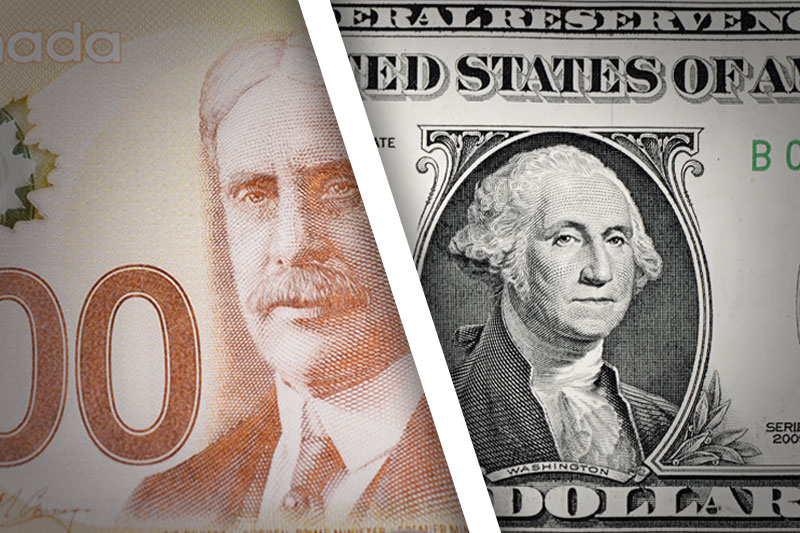Investing.com - The U.S. dollar edged higher against the Canadian dollar in early trade on Tuesday but gains were limited amid ongoing doubts over how long the Federal Reserve will stick to its easy money policies.
USD/CAD edged up to 1.0436 during early U.S. trade, from Monday’s close of 1.0427.
The pair was likely to find support at 1.0404, the low of November 7 and resistance at 1.0470.
The dollar remained under pressure after dovish comments by Federal Reserve Chairwoman nominee Janet Yellen last week were seen as cementing the view that the bank will continue its USD85 billion-a-month asset purchase program well into the beginning of next year.
But this view was tempered after Fed Bank of New York President William Dudley said Monday he was growing more hopeful that the economy is improving, and added that the fiscal uncertainties that acted as a drag on growth are likely to abate in the coming months.
Investors were looking to the minutes of the Fed’s October meeting, as well as a speech by Fed Chairman Ben Bernanke on Wednesday for further indications on the future course of U.S. monetary policy.
Investor confidence was hit after the Organization for Economic Co-operation and Development cut global growth forecasts on Tuesday.
OECD said the global economy will grow by 2.7% this year and 3.6% in 2014, down from forecasts of 3.1% and 4% in May, warning that the outlook for emerging markets is deteriorating.
The U.S. economy would grow 2.9% in 2014 it said, but warned that the “potentially catastrophic crisis" over the debt ceiling had undermined investor confidence.
Elsewhere, the loonie, as the Canadian dollar is also known, was fractionally lower against the euro, with EUR/CAD edging up 0.09% to 1.4097.
The single currency shrugged off a report showing that the ZEW index of German economic sentiment rose to a four-year high this month.
The ZEW index of German economic sentiment rose to 54.6 in November from October’s reading of 52.8. Economists had expected the index improve to 54.0.
USD/CAD edged up to 1.0436 during early U.S. trade, from Monday’s close of 1.0427.
The pair was likely to find support at 1.0404, the low of November 7 and resistance at 1.0470.
The dollar remained under pressure after dovish comments by Federal Reserve Chairwoman nominee Janet Yellen last week were seen as cementing the view that the bank will continue its USD85 billion-a-month asset purchase program well into the beginning of next year.
But this view was tempered after Fed Bank of New York President William Dudley said Monday he was growing more hopeful that the economy is improving, and added that the fiscal uncertainties that acted as a drag on growth are likely to abate in the coming months.
Investors were looking to the minutes of the Fed’s October meeting, as well as a speech by Fed Chairman Ben Bernanke on Wednesday for further indications on the future course of U.S. monetary policy.
Investor confidence was hit after the Organization for Economic Co-operation and Development cut global growth forecasts on Tuesday.
OECD said the global economy will grow by 2.7% this year and 3.6% in 2014, down from forecasts of 3.1% and 4% in May, warning that the outlook for emerging markets is deteriorating.
The U.S. economy would grow 2.9% in 2014 it said, but warned that the “potentially catastrophic crisis" over the debt ceiling had undermined investor confidence.
Elsewhere, the loonie, as the Canadian dollar is also known, was fractionally lower against the euro, with EUR/CAD edging up 0.09% to 1.4097.
The single currency shrugged off a report showing that the ZEW index of German economic sentiment rose to a four-year high this month.
The ZEW index of German economic sentiment rose to 54.6 in November from October’s reading of 52.8. Economists had expected the index improve to 54.0.
